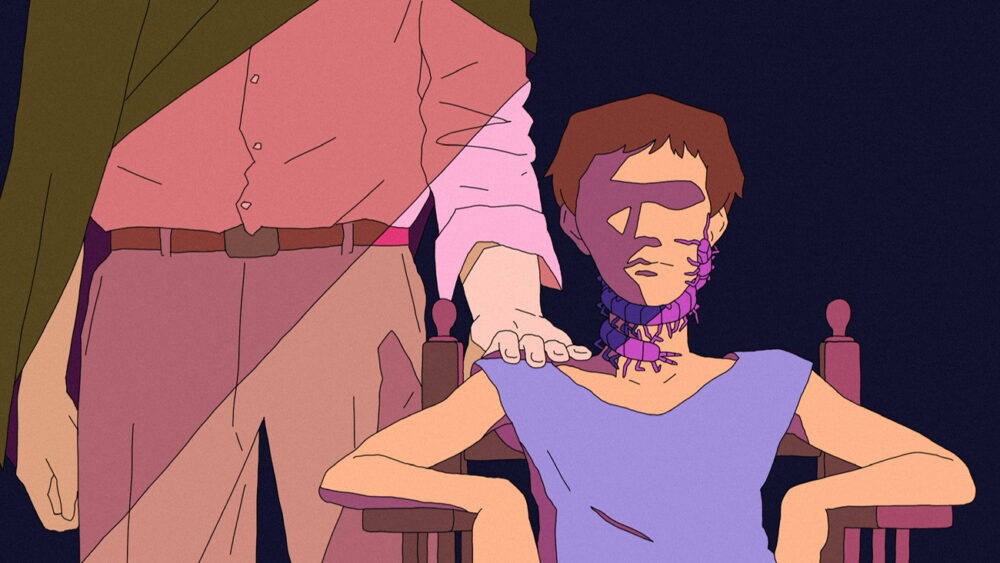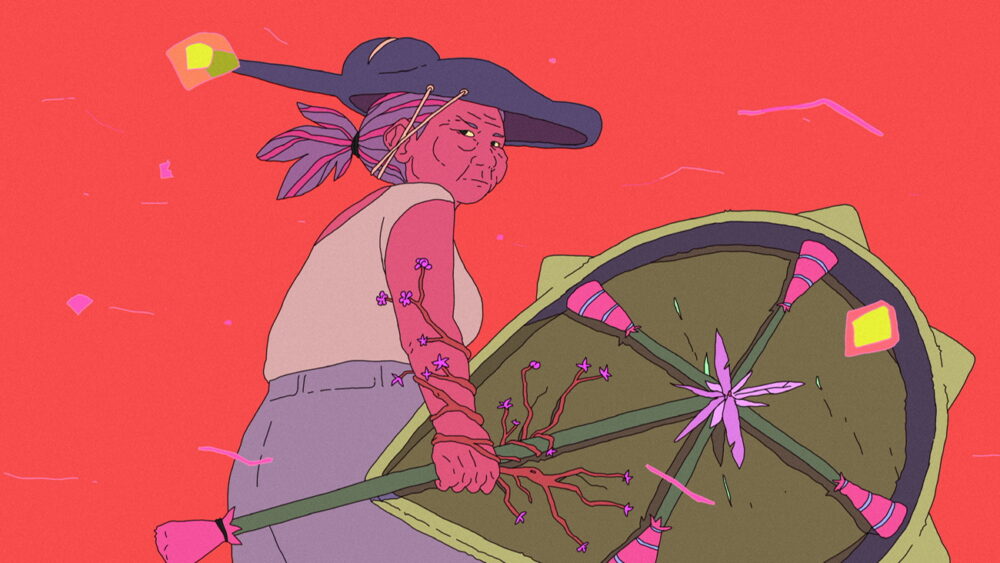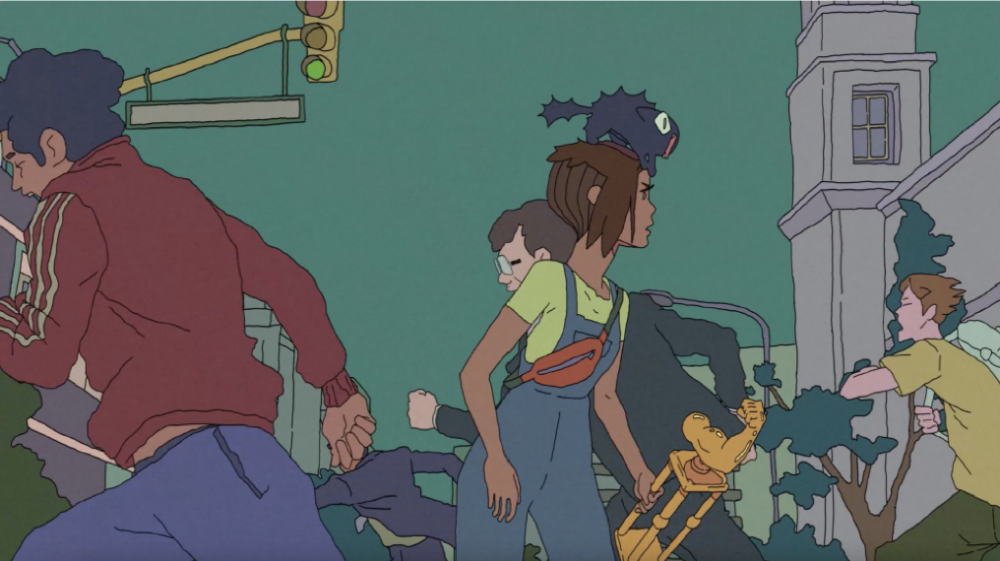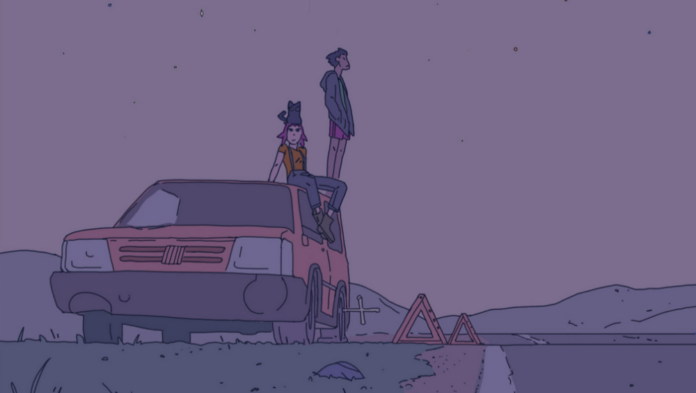Founded by Ron Dyens in 1999, the acclaimed French company Sacrebleu Productions is best known for animated features such as Gints Zilbalodis’s award-winning 2024 movie, Flow, Benoît Chieux’s Sirocco and the Kingdom of the Winds, Michaela Pavlátová’s My Sunny Maad and Anca Damian’s Marona’s Fantastic Tale as well as numerous “festival favorite” shorts such as the Oscar-nominated Madagascar, a Journey Diary, Friend of a Friend, Papillon, Beast Inside and Maurice’s Bar.
Sacrebleu is also working on several boundary-pushing animated series that aim to raise the bar for small-screen productions. Among them is Esther, a beautiful adaptation of Ezequiel Torres’s graphic novel. The 11 x 22-minute 2D-animated show (produced by Sacrebleu, Rudo Company and TakeFive) follows the adventures of a young girl who dreams of becoming a true shaman and has to travel with an Inca god who lives in the body of a black cat in order to realize her passions. We had the chance to interview the creator/director/writer Ezequiel Torres and the project’s producer/writer Ron Dyens (Flow, Sirocco, The Long Way North) for an exclusive sneak peek at this promising new project:
Animag: Your new show certainly looks interesting and sounds very promising. Can you tell us a bit about the origins of the this project?

Ezequiel Torres: The project had its starting point, even in the very first days of creation, with the main characters “acting” in a chase scene that remains at the core of the project’s essence to this day. From the beginning, the themes of a road trip, action, possession, and sibling bonds were part of the genesis of Esther. When Ailin Bustamante joined as the artistic producer from Argentina, the heart of the show began to emerge through interviews and countless questions. Years later, when Ron Dyens from Sacrebleu came on board, the project gained greater structure, aiming not only to appeal to Latin American audiences but to achieve a certain universal quality.

Ron Dyens: I had the chance to meet Ezquiel and Ailin in 2022, during Ventana Sur in Argentina, and I was immediately fascinated by the series’ universe, its originality and Ezequiel’s directing talents. They were kind enough to place their trust in me, and I’m delighted.
When did you start working on the show?
Ezequiel: After more than 10 years working in the animation industry, during a weekend in 2019, I drew the characters and began imagining scenarios where they would appear. Intrigued and eager to direct an action web series, I started experimenting with scenes that captured the overall mood of the story, and I immediately fell in love with the characters.
What stage is Esther at right now? When do you think it will be ready for delivery?
Ron: We presented Esther at the Cartoon Forum in Toulouse (France) in September. The project had the second highest audience of all the projects presented, and the first in terms of series (the first being a 26’ project) and adult target. Overall, it was a great success, and many potential partners, TV channels and streamers came to congratulate us after the presentation. We’ve just finished the pre-bible and will be sending it out to our partners at the end of November. We can’t wait to get their feedback! It’s a very, very exciting time to be offering the series to outside professional eyes!

Where will be bulk of the animation be produced?
Ezequiel: For now, it’s a French (Sacrebleu Productions )–Belgian (Take Five)–Argentine (Rudo Company) co-production. We believe the majority of the animation will be done in France. As an Argentine director and one of the founders of Rudo Company, I am eager to produce part of the series in my home country and involve as many of the talented artists I admire as possible in the project. The series could be made using Toon Boom, Blender, or any purely 2D software.
Ron: It’s a French series about Latin America, directed by an Argentinian. We’ll be taking this cultural aspect very much into account, but we’ll also be paying close attention to what our financial partners come up with.
Can you tell us talk a little bit about the visual style of the show?
Ezequiel: It’s a mix of hard work and many inspirations. I always say that an artist’s unique style is a blend of what their skills allow them to do, what feels natural or genuine to them, and their personal taste influenced by other artists’ work. I believe no one is immune to what they see, and I’m an extremely impressionable person. When I discovered Masaaki Yuasa’s work, I thought, “Wait, it’s okay to draw messy, and people won’t think you’re a bad artist?” I had been developing a personal style based on black and white, clear shapes, and distinct silhouettes. The first project where I solidified this style was the short film/music video The Wolf (which has over 200 million views on YouTube). Later, I added a more expressive line and the idea of graphically representing “out of focus” in 2D. This concept emerged years ago in my sketches and was further developed in animation, influenced by Katsuhiro Otomo’s drawings and Gaston Pacheco’s graphic ideas.

What do you love about your new show?
Ezequiel: Beyond the fact that this will be my first experience as a director and creator of a series—which already makes it a unique and unrepeatable project for me — I love it because it resonates deeply with me on a personal level. Like many others, I pursued something that wasn’t understood in my family. Entering this unexplored “artistic” world without guidance, at a time when the internet didn’t exist, felt like trying to learn shamanism in modern society: inaccessible and impossible to achieve. For me, art and drawing are magic. Imagining a world without magic is unthinkable for both me and Esther. What I love about this project is that, despite lacking her family’s support, clear guidance, or innate talent, she is still determined to pursue what makes her happy and to become a wise shaman—or at least to ensure that magic doesn’t disappear from her world.
Ron: I love everything about this project! It’s completely insane and driven by a very, very great director capable of such incredible 2D camera moves!!! I also totally love the message of respect for nature, of listening to what the Earth is telling us, but also the ability to have breathtaking action scenes! Esther is also about family, the family of gods and the family of humans. What are we without family in the face of the world’s violence? We need to have loved ones on whom we can rely. But do we really know them? This is one of the major themes of Esther, and it’s an almost biblical subject!

What are your biggest challenges as you set out to make this show a reality?
Ezequiel: As the project’s director, the iconic and memorable scenes often clash with a more structured and “universal” script. I think achieving the best possible harmony between direction and script is the most challenging part of this project. I’ve been very lucky, and I currently have the support of many talented friends and partners, including Ron Dyens, who, aside from being incredibly skilled, offers an interesting perspective on the project as both a producer and a writer.
What do you hope audiences will take away from your new series?
Ezequiel: I have two goals, one perhaps more selfish than the other. First, I would be thrilled if the audience could discover a part of my world and my childhood in Argentina—my surroundings and little customs that, while not so different from other parts of the world, have great potential that hasn’t been explored in audiovisual media. The second goal, more focused on the audience, is to deliver an emotionally rich experience. I think anime, in general, has an editorial approach that has been adopted by many genres and even parodied. I find it fascinating how many Japanese series manage to move you and give you butterflies in your heart and soul. To create the experience I want for the audience, I’ll draw on the spirit of anime, combined with the rawness of live-action, to keep the viewer in a tangible and realistic world while occasionally immersing them deeply into the emotions of the protagonists — something only anime can do. I believe these two perspectives, balanced just right, can create a memorable experience for the viewer.
You can watch the trailer for Esther below:




